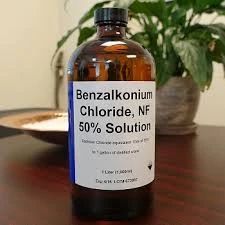Understanding Poly Aluminium Chloride and Its Applications in Various Industries
What is Poly Aluminium Chloride?
Poly Aluminium Chloride (PAC) is an inorganic polymer that has gained significant attention in various industrial applications, especially in water treatment processes. It is a coagulant, which means it helps in the aggregation of small particles in the water, leading to their removal during the purification process. PAC has become a preferred choice for many industries due to its efficiency, effectiveness, and versatility.
Composition and Production
PAC is produced by hydrolyzing aluminum chloride in an alkaline environment. The chemical formula for PAC is often represented as Aln(OH)mCl(3n-m), where 'n' represents the degree of polymerization. This polymeric structure gives PAC its unique properties that enhance its performance as a coagulant. The production process typically involves carefully controlling the pH and the concentration of aluminum chloride to obtain a final product with the desired properties, such as molecular weight and charge density.
Applications in Water Treatment
One of the primary applications of PAC is in water and wastewater treatment. When added to water, PAC forms a gelatinous mass that encapsulates small particles, bacteria, and organic materials. This aggregation makes it easier to remove contaminants during sedimentation or filtration processes. The use of PAC in drinking water treatment helps in improving the clarity and quality of the water, making it safe for consumption.
In addition to drinking water treatments, PAC is also used in the treatment of industrial wastewater. Industries, such as textiles, pharmaceuticals, and paper manufacturing, generate water with high levels of contaminants. PAC effectively removes suspended solids, color, and certain organic compounds, assisting in meeting regulatory discharge standards.
Advantages of PAC Over Traditional Coagulants
what is poly aluminium chloride

PAC offers several advantages over traditional coagulants like alum (aluminum sulfate). Firstly, PAC has a higher charge density, which enhances its ability to destabilize colloidal particles. As a result, it requires a lower dosage to achieve similar or even better coagulation results compared to alum. This characteristic not only makes PAC more economical but also reduces the volume of sludge generated after treatment.
Secondly, PAC exhibits a wider effective pH range, which is beneficial in varying water conditions. While alum is less effective in alkaline conditions, PAC can work efficiently across a broader spectrum of pH levels. This flexibility allows treatment facilities to adapt to different water sources without compromising the quality of the treatment.
Lastly, PAC is known for producing clearer treated water with lower residual aluminum content. This is particularly crucial for drinking water applications, as high levels of residual aluminum have raised health concerns.
Environmental Considerations
Environmental impact is an essential aspect of using PAC in water treatment. While it is generally considered safe and produces less aluminum residual than traditional alum, the production and disposal of coagulants should be managed carefully. Effective waste management practices should be employed to minimize any potential negative effects on the environment.
Conclusion
In summary, Poly Aluminium Chloride is a versatile and effective coagulant widely used in water and wastewater treatment processes. Its ability to aggregate small particles, coupled with its advantages over traditional coagulants, has made it a popular choice within the industry. With ongoing advancements in water treatment technologies and increasing environmental regulations, PAC is likely to continue playing a vital role in ensuring clean and safe water for both industrial and municipal uses. As the demand for sustainable and efficient water treatment solutions rises, understanding the properties and applications of PAC will be crucial for professionals in the field.
-
Water Treatment with Flocculant Water TreatmentNewsJun.12,2025
-
Polymaleic AnhydrideNewsJun.12,2025
-
Polyaspartic AcidNewsJun.12,2025
-
Enhance Industrial Processes with IsothiazolinonesNewsJun.12,2025
-
Enhance Industrial Processes with PBTCA SolutionsNewsJun.12,2025
-
Dodecyldimethylbenzylammonium Chloride SolutionsNewsJun.12,2025





